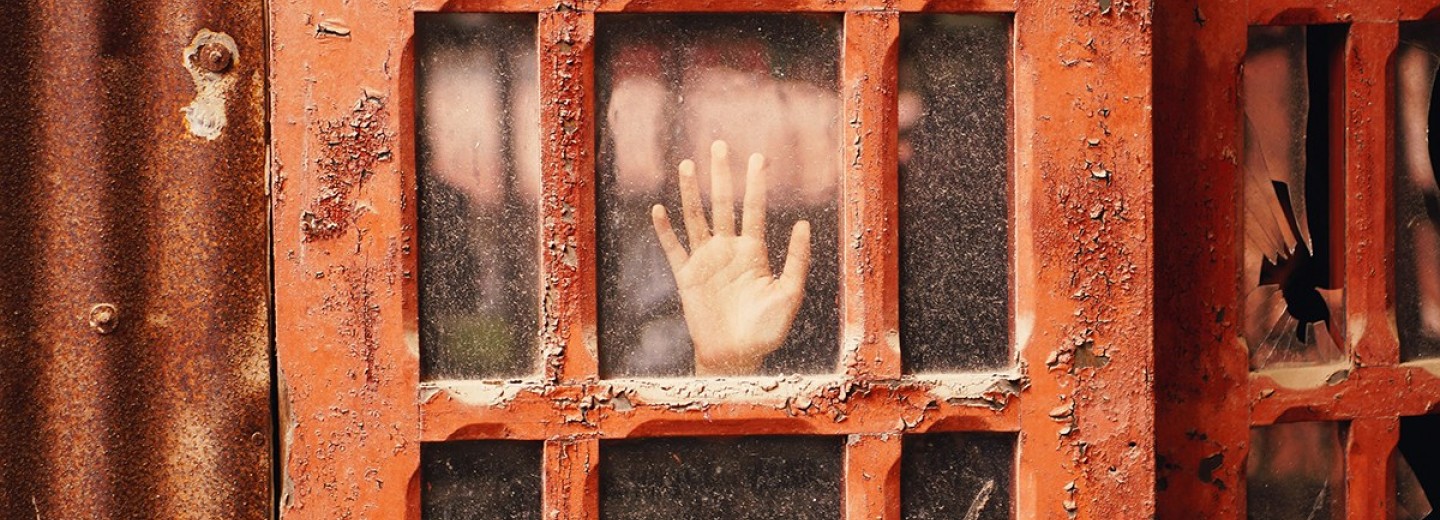Domestic abuse – a police officer’s work
In our post of 25th March, we reviewed ‘Where Silence Ends’, a shocking and moving account of child sexual abuse in the USA. Below is an interview with Kelly Cuff, a former police officer in the UK who dealt with many thousands of child abuse cases. The problems of child sexual abuse and domestic violence are often linked. In the UK, the number of cases is alarming. But Kelly believes progress is being made.
Kelly Cuff – Police Constable – her work with domestic abuse

Firstly, tell me about your job and your experience, Kelly.
I was 20 years in the UK police as a Police constable. In the last 10 years of my career, I was non-uniformed and in a covert role as a Domestic Abuse Officer. My covert role was to conttribute to victim safety. I was dedicated to supporting and working with victims of domestic abuse. I also trained as a sexual offences liaison officer supporting victims of all kinds of sexual abuse.
Being a specialist domestic abuse and sexual offences liaison officer was also an advisory role. Uniformed officers and CID investigating officers sought my advice and guidance on some of the cases that they were attending or investigating.
What was your work in this unit?
The department that I worked for included the child abuse investigation unit and vulnerable adults’ team; we therefore created a ‘safeguarding’ unit. I was further trained to deal with honour-based violence and female mutilation. I also trained to be a legal representative to help obtain emergency domestic abuse Protection Orders in the Magistrates Court.
So how many cases did you handle a year or a month or a week?
The rural area we covered was 1040 square miles with a population of about 275,000. There were around 30 or so domestic incidents in this area every day. On average five or six would be considered ‘high risk’. However, over the two-week Christmas season 2018/19, in Devon and Cornwall alone, 2637 domestic incidents occurred.
These are appalling figures of domestic violence for a quiet rural region in the UK. How do these events happen?
Many victims of domestic violence feel it is their fault that they always seem to attract, or go for the same type of relationship. But it can be a ‘pattern of behaviour’ in some perpetrators that they often seek out people of vulnerability that they might find are easier to manipulate and control. These relationships start off well and the abuse might happen later, by which time the victim could be dependent on the perpetrator and the abuse becomes ‘normal’ behaviour. It is highly unlikely for an assault to happen on a first date. If it did, I’m sure the victim would call the police and make a complaint. Whereas, in cases like these when victims have formed an emotional attachment to them and have possibly become dependent on them, so the occasional blow might not have the same impact as it would to the person who wasn’t emotionally involved. And so, it begins.

Let’s move onto the book by Angela Ruiz. You’ve read the book. How familiar is it to you and how can victims report offences like this?
Very familiar. One of the problems with reporting offences is that people (especially children) get confused. Sometimes the abuse becomes indoctrinated by the victim and it becomes normal behaviour, so why report that?. Another reason is that deep down there could be a dependency. There may be some actual emotional attachment between the two people. Again, would you report someone you care for?
So why do victims (or their Mothers) stay with the abuser?
There are a lot of reasons why they may stay. One is financial; perpetrators can control the money coming in and the money going out. It all starts out very nicely. “You pay into my account because I’m really good with money.’ The victim (or parent) doesn’t have the finances to leave.
Rightly or wrongly, they also feel they are protecting their children by staying in the family unit. Obviously, the impact on children is massive. But the victims/parents feel like they’re keeping a family unit together and they think that’s good for the children.
In the book, the perpetrator was a Father sexually abusing his daughter. Why would people not report that?
The mother knew about it and the child knew about it. I would imagine the Mother was being massively controlled. The book does not go into what fear she possibly was in if she were to report something she knew about. She might not have wanted to lose her position in the community. Clearly there were conversations with the Father because we read about them. Did he threaten her with physical harm perhaps? Or did he say, ‘I’ll tell people you are bad mother’, ‘I’ll get you certified’? The impression I got from the book was that her mother did not report it because it was too complicated: he was a good man and was well respected in the community. He acted responsibly and everybody liked him. I’m guessing she thought that it wasn’t so bad that it was worthwhile upsetting the family and the neighbourhood. In any case what would happen if she did?
Why did the victim not speak out?
One of the biggest reasons a victim will not ordinarily speak out is because of fear of being disbelieved. This fear goes across all cases and all levels. Recently there have been many reports of sexual offences by high profile celebrities. Well, now more past victims are now coming forward because that is the first time they feel they can. Before, they wouldn’t be able to get very far because of the high profile of the person – just like the ‘respectable’ Father in the book.

Have things changed in the UK now?
The support structure is much better now from people like pharmacists, doctors, or nurses. For example, there are posters everywhere saying: ‘if you put something on your hand, the person will phone the police for you because you’re in a situation where you need help’. The good thing about when I worked in the domestic abuse unit was that we had a huge multi agency approach. We would be involved with child services, education, what used to be called Women’s Aid. We worked alongside teachers, the midwife team, health visiting team. We contacted anybody involved working with females, males, children.
So how can these working groups find out about hidden abuse?
People working in the schools, teachers, and teaching assistants, can be trained to recognise signs of a child who might be witnessing or receiving abuse. If they’re in school for eight hours of the day people can be trained to recognise these signs.
I can see that something visible, like violence, may be noticeable. But sexual abuse, of the sort talked about in the book, happens behind closed doors. How would anybody know what was going on? Quite clearly this Father was clever at manipulating people and making it appear that there was nothing wrong.
Signs given by victims and children are easy to pick up. Although they don’t usually vocalise what they’re going through, if you’re working with children, you can notice their patterns of behaviour. They become withdrawn; they become shy; their schoolwork goes downhill; their eating patterns might change. A mother or someone looking after the child might notice that they are wetting the bed at night beyond the years that they should have finished. Children can become protective – and this is a big thing – children protecting their mother. Yes, that happens. But you can see through their behaviour if something is happening at home. A teacher might have concerns about the child’ s concentration and so on.
Have you noticed any difference across cultures in terms of analysing children’s behaviour? My perception is that it does change between cultures.
We might say that the child sexual abuse that Angela talks about in this book happens all around the world. It almost certainly does. However, in the UK, certain activities that might be commonplace elsewhere, would be child abuse here. I can’t say what happens in other countries but in this country, we are clear about what constitutes child abuse.
There are times when the family will do everything they can to keep the abuse secret. Offences involving children, like forced marriage for example, happen in late July. Suddenly, the children are exposed to six weeks off-radar for the summer holiday. The child wouldn’t be told what’s going on. They would have no knowledge whatsoever until the day before the trip. Then they will be rewarded; ‘you’re having a big party on the weekend. It is a family party but we’re celebrating you.’ The marriage would take place, and everybody would praise the child for being a brave little girl.
People from different cultures coming to the UK know that it’s very wrong here and it will be dealt with robustly. But they still feel: ‘we want our traditions, and we want that done to our child because it’s in our culture to do so’. In 2019, the UK Forced Marriage Unit gave advice or support in 1,355 cases related to a possible forced marriage.
So, coming back to the book. How could ordinary people in that period in the USA possibly help? How could they even know what was going on?
Well, it might have been known anyway. The Mother knew. Towards the end of the book, you find out there are more victims and they had similar stories. This happens in a lot of cases. Once someone is no longer in the picture or someone has spoken up, other people come forward with their stories. The element of fear is possibly why a lot of the victims don’t show any difference in behaviour that would be easily picked up by the someone else looking in.
Victims also are good at managing their own risk and very good at covering up any hint or sign that they’re going through a traumatic experience. I think it shows strength because they are dealing with something that is very confusing to them. They might then isolate themselves to try and deal with what’s going on. They would not have contact with people who might pick up on behaviours they’re trying so hard to control.

I would imagine nowadays it would be much easier to note people’s behaviour and wonder what’s going on – that something’s not quite right.
Yes, in the UK at least, you’ve got support in every doctor’s waiting room; in every ladies’ toilets there are posters. When police do probationary training, they are trained to recognise signs of domestic abuse. The statistics say one in every three women (and one in six men) will suffer domestic abuse in their lifetime. In the old days, police did not go to domestic incidents. Inside the home police did not attend. Now there is the multi-agency safeguarding hub. We’re not talking about just females but also children, vulnerable adults who possibly are being abused by their own children, dealing with mum who’s got dementia and being roughly handled. Domestic abuse can occur in all ways of life.
There are so many domestic incidents, so many domestic related crimes that either do or don’t go through a court process. As a result of this support, more cases are being reported than ever before. In the first three months of UK lockdown, the help lines received over 40,000 calls. In the 12 months ending 20th March 2020, the police recorded 758,941 domestic abuse-related crimes in England and Wales. This continues an ongoing trend that may reflect improved recording by the police alongside increased reporting by victims.
Concerns around sexual abuse have been identified for over 2,800 children in the UK who are the subject of a child protection plan or on a child protection register. Over a third of all police-recorded sexual offences are against children. Girls and older children are more likely to experience sexual abuse. Most children who experience sexual abuse were abused by someone they knew.
At the end of the day, the police are trying to keep women and children and other victims from death or massive harm. I don’t know what the future holds but in, say 2030, there might come a time when we would say: ‘Remember when the numbers of cases were through the roof in 2020?’
The huge number of reports today could be a sign that people are coming forward more. Perhaps it is all coming together and as with this pandemic, working together is bringing some calm to help prevent these many tragedies.
Worked on the article:

Wanlikhang






